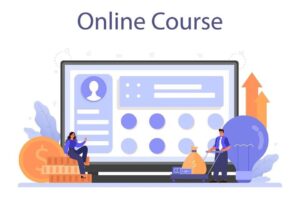Beginning affiliate marketing online needs knowing its complex dynamics, which depend on teamwork and effective promotion. We explain affiliate marketing’s ambiguity and burstiness in this detailed tutorial. You’ll see how content production drives income as we examine retailers, affiliates, and networks. Let us guide you through successful advertising methods, customer-centric improvements, and critical insights to manage affiliate marketing and maximize online earnings.
How Affiliate Marketing Works
Dynamic affiliate marketing links merchants, affiliates, and customers for mutual benefit. To profit from this method, you must understand how it works. Affiliate marketing centers on the merchant, the product, or the service owner. Merchants create, source, and provide their products.
They work with affiliates to market their goods and services to broaden their reach. Affiliate marketing includes ebooks, courses, software, books, and gadgets. Web design, hosting, and consulting may be marketed via affiliate relationships. Merchants choose which items and services affiliates promote.
Affiliate partners, or marketers, promote the merchant’s goods and services. It might be bloggers, influencers, or big companies. An affiliate needs an audience or platform to market-linked items. Merchants and affiliates interact via the affiliate network or platform, enabling transactions. Affiliates must register for these platforms, which receive payments and manage marketing campaign analytics.
Merchants and affiliates may communicate securely and transparently on these platforms. Affiliates promote products and services using merchant or affiliate network-provided affiliate links. These links track affiliate traffic and sales. When a customer buys via the affiliate’s association, the merchant pays the affiliate a flat rate or percentage commission.
Creating Revenue Content
Affiliate marketing success depends on revenue-generating content. The idea is to provide engaging content that educates and persuades people to click on affiliate links and buy. Content variety deepens your marketing. Foundational blog entries provide in-depth information on your affiliate items or services. Dynamic videos demonstrate advantages and features.
eBooks and courses distinguish you as an expert while quietly advertising your affiliate products. Graphical infographics make information shareable and engaging. Audio podcasts provide a unique approach to discussing and endorsing things. All content kinds need visuals like photos to increase engagement.
Affiliate marketing should be effortlessly integrated into content that matches audience interests. This technique gives value to your audience and raises the possibility of affiliate link clicks and purchases. Successful affiliate marketing relies on valid, visually attractive, and audience-focused content.
Promoting Affiliate Products
Successful Affiliate Product Promotion Involves More Than Just Links.
- Integrate Affiliate Links Naturally: Affiliate links must be seamlessly integrated into your content. Links in a blog post, video, or social media update should be helpful rather than intrusive.
- Utilize Social Media Platforms: Use social media to expand your reach. Create compelling Twitter, Facebook, Instagram, and LinkedIn posts highlighting connected product advantages polls and Q&As to boost engagement.
- Paid Ads on Search Engines: Pay for Google or Bing ads to promote your affiliate items. Target relevant keywords and demographics to find clients looking for comparable items or services.
- Influencer marketing campaigns: To reach more people, work with people with many followers in your field. Influencers may personally advocate things to their following, building trust.
- SEO Strategies: Increase content visibility with SEO strategies. To boost affiliate content rankings, use keywords and backlinks.
- Email Marketing Campaigns: Use your email list. Write attractive emails promoting affiliate items, including discounts. Regular mailings may alert customers about new things and deals.
Optimizing The Customer Experience
Affiliate marketing conversions and income depend on customer experience optimization. For easy navigation and buying, a website must be user-friendly. Discounts and free delivery entice people to buy your linked items. Customer input helps improve the experience.
Secure and efficient payment processing builds client trust and reduces purchase friction. Customer purchase probability increases by offering helpful product or service information and optimizing the website for a good user experience.
Optimizing Existing Traffic
Optimizing traffic boosts conversions and affiliate money. Affiliates may determine the best ad locations for clicks and revenues by testing. Optimization of landing pages ensures that visitors are smoothly directed to buy. Retargeting advertising allows affiliates to contact past website visitors, increasing brand recognition and repeat visits.





